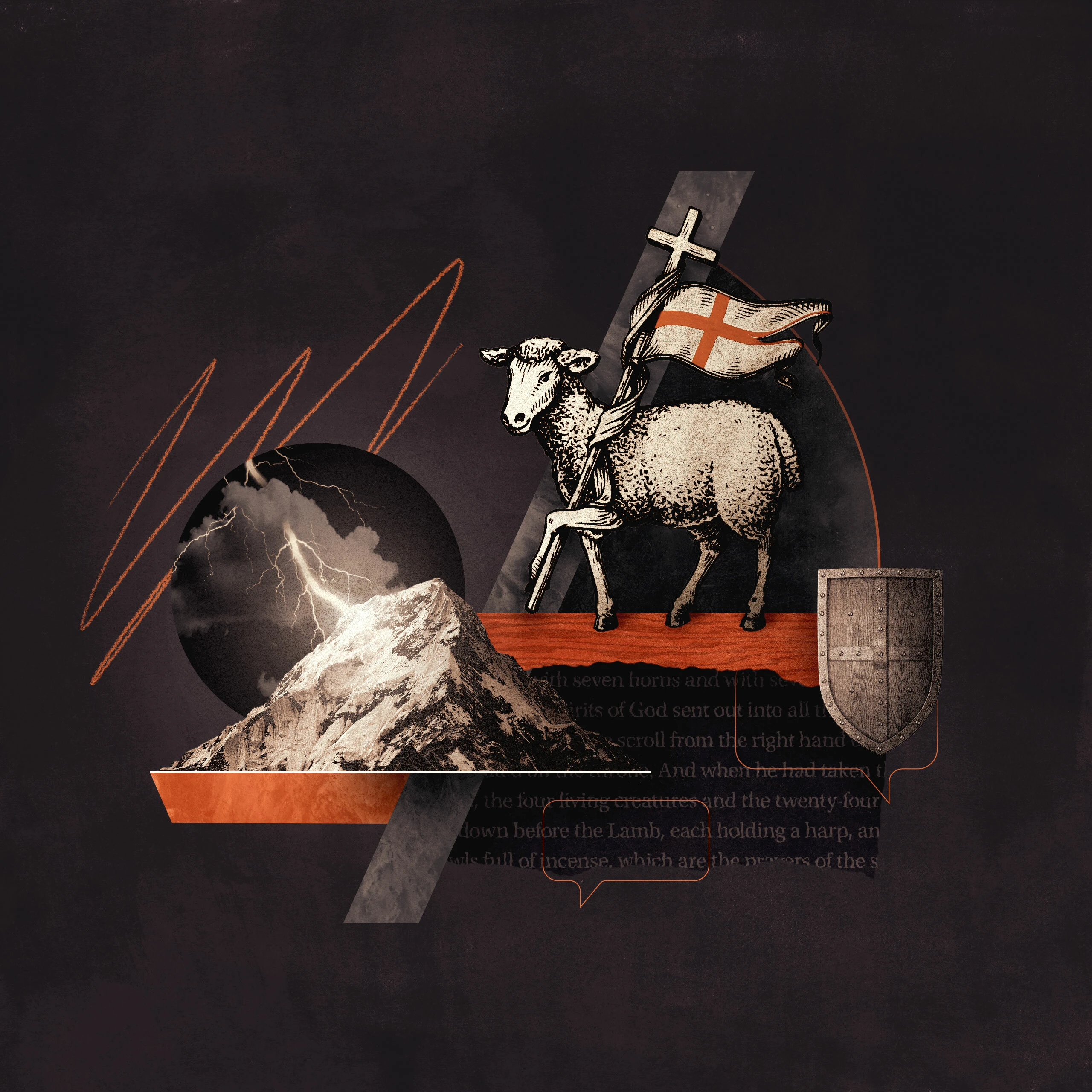3 Things You Should Know About Revelation

Confusing. Controversial. Troubling. Terrifying. If the book of Revelation brings these descriptions to your mind, you are not alone. Yet God’s purpose for Revelation is to reveal, not conceal—to encourage, not distress. Revelation promises blessing to “the one who reads aloud the words of this prophecy, and . . . those who hear, and who keep what is written in it” (Rev. 1:3, emphasis added). Envision the scene in the first-century congregations to which Revelation was first sent: one leader stands to read the scroll aloud, while everyone else listens. They can grasp Revelation’s message and receive the blessing it promises simply by hearing it read aloud and taking its truths to heart. So can we. To receive the blessing, you should know three things about this climactic book of the Bible.
1. Revelation unveils the triumph of the Lamb in a world run amok.
The first verse of Revelation is the book’s title: “The revelation of Jesus Christ” (Rev. 1:1). The Greek term represented by “revelation” (apocalypsis) suggests that an “unveiling” is needed for us to see through the surface appearances of our experience and world history, and to perceive the core reality that lies behind them and explains their source. If we see only superficial symptoms—war’s atrocities, environmental catastrophes, economic collapse, famine and starvation, disease and death—we will never discern why our world has run amok. Only a glimpse behind the veil into the spiritual realm where God, who is sovereign over everything, combats “the great dragon . . . that ancient serpent, . . . the devil and Satan” (Rev. 12:9; 20:2), makes sense of the miseries and mysteries that surround us.
This book is a “revelation of Jesus Christ” in two senses: Jesus is both the agent who unveils and the subject who is unveiled. First, “God gave” this revelation to Jesus Christ “to show to his servants the things that must soon take place” (Rev. 1:1). That transfer from the Father to the incarnate Son is dramatized in Revelation 4 and 5, as the Lamb receives from the Enthroned Sovereign a scroll and then breaks its seals, one by one, to initiate and control the events that unfold in history. The Lamb alone is worthy to disclose and execute God’s agenda since the Lamb has triumphed by enduring violent death to ransom “people for God from every tribe and language and people and nation” (Rev. 5:5–10).
Second, Revelation also unveils Jesus Christ. Not only is He the Lamb who triumphed through redemptive suffering; He is also “one like a son of man” who walks among His churches on earth (Rev. 1:10–20), assessing their spiritual health and blessing those who stand fast (ch. 2–3). Jesus is the offspring of the woman promised at the dawn of history (Gen. 3:15), who at His birth was threatened by the ancient serpent but exalted to God’s throne (Rev. 12:1–6). His blood expelled our accuser from heaven, silencing the charges against us (Rev. 12:7–17). Jesus is the Captain of heaven’s armies who will return to destroy the dragon, its monstrous minions, and all who believe their lies (Rev. 19:15–21). Jesus, with the Father and the Spirit, is the focus of worship by God’s heavenly attendants, His angelic emissaries, and all creatures everywhere (Rev. 5:9–14; 11:15–18; 14:2–5; 15:3–4; 19:1–8; 21:2–4, 22–24; 22:3–5).
Because Revelation’s visions portray the horrific realities of sin’s toxic byproducts in the world run amok, those scenes of mayhem grab our attention, like traffic collisions on highways. But if we fixate on the “trees” (scenes of human evil and the divine wrath it provokes), we will miss Revelation’s “forest”: the majesty and mercy of Jesus Christ.
2. Revelation speaks with a pictorial “vocabulary” rooted in the Old Testament.
Revelation delivers its message in an idiom appropriate to hearing it read aloud: vivid pictures etched indelibly on our imaginations. Throughout Scripture, God (the consummate communicator) paints portraits: shepherd, rock, fortress, fire, husband, and so on. Through image-laden dreams the Lord reveals His plans to and through Joseph and Daniel (Gen. 37, 41; Dan. 2, 7). To prophets such as Isaiah, Ezekiel, and Zechariah the Lord gives glimpses behind the veil, into His heavenly courtroom, enabling them to see in vivid symbols (as well as hear in words) His message for His people. In Revelation’s symbolism, God is doing what He has always done.
To grasp the import of Revelation’s symbols, we need a dictionary that introduces us to its pictorial vocabulary. That dictionary, written by God over the centuries, is the Old Testament. Individuals and events of Old Testament history (creation, serpent, exodus, Moses, Elijah, etc.), as well as the visions shown to Israel’s prophets, are the keys that unlock Revelation’s symbolism. Because Christ speaks both to first-century churches and to the twenty-first-century church, He employs a pictorial idiom to which all His people, in every generation, have access: Old Testament redemptive events and prophetic symbolism.
3. Christ’s purpose for Revelation is to fortify Christians whose faith and faithfulness are under Satan’s attack through persecution, exclusion, deception, and complacent worldliness.
Revelation has a reputation for igniting controversy. Although Jesus warned against date-setting, as though we could probe divine secrets that are “above our pay grade” (Mark 13:32–35; Acts 1:7), camps of Christians still wage war over how John’s visions “sync” with events in their own day. Instead of supplying ammunition for our eschatological skirmishes, however, Jesus gives the book of Revelation for a more urgent and practical purpose: Christ is arming His church, which is under attack from the forces of evil, to stand fast.
Revelation alerts us to Satan’s stratagems and fortifies us to resist the enemy’s assaults. Violent persecution and societal rejection tempt God’s people to renounce our allegiance to Christ. The church may be deceived by false teachers and seduced into complacency and compromise through worldly affluence (Rev. 2–3). John’s visions “incarnate” these weapons of attack as beast, false prophet, and prostitute (Rev. 13, 17).
The seven churches in Asia were a microcosm of the church throughout the ages. Satan’s malignant forces shape-shift, donning different disguises in different eras. Whatever forms his attacks may take, Satan is already defeated (Rev. 12:7–13; 20:1–3). So, the triumphant Lamb gave us the book of Revelation to instill in us the discernment, courage, and fidelity to hold fast to His Word as we eagerly anticipate the blessing of His presence in the new heaven and earth (Rev. 1:3; 22:7, 14).
This article is part of the Every Book of the Bible: 3 Things to Know collection.


